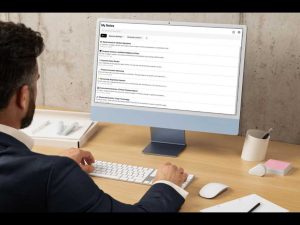
The ambitious Apple Car project, known internally as Project Titan, was cancelled earlier this year after almost a decade of development. But that much work doesn’t just vanish overnight. What’s left behind? What has become of the employees brought in to work on the project, and the technology they’ve developed? Will Apple divert the resources into new avenues, or is the whole thing a total loss?
In this article we look at how Apple is dealing with the aftermath of its car project, what it learned from the failure, and the impact all of this is having on the company and the tech industry at large.
Apple’s mysterious fleet
By January 2024, Apple had a fleet of 68 autonomous test vehicles and 162 registered drivers. Despite the cancellation of the project, Apple decided not to decommission these vehicles. According to media reports, the test vehicles remain fully registered. However, the number of drivers has been drastically reduced from 172 to 15. The permits are valid until April 30, 2025.
Why is Apple holding on to its fleet? One possible explanation is that the company wants to sell intellectual property from the project, and that the vehicles could serve as demonstration units to present the developed technologies to potential buyers.
Another possibility is that Apple is archiving the research data obtained in order to use it for future developments. The remaining employees could play a central role in the orderly management of project resources.

Shutterstock.com / Joaquin Corbalan P
Why did the Apple Car fail?
Project Titan was launched in 2014 in a bid to catapult Apple into the automotive industry. The aim was to develop a self-driving electric vehicle that met Apple’s high standards, but despite around $10bn of financial investment and the collaboration of more than 2,000 specialists, the project failed.
One of the main reasons was the lack of clear direction. The project repeatedly changed strategy, from an electric vehicle to an autonomous vehicle and back again. These constant realignments led to confusion and frustration within the team. In addition, the technological hurdles were greater than expected. Developing a safe and reliable autonomous vehicle proved to be more complex than Apple originally anticipated.
Internal differences of opinion and staff changes exacerbated the problems. The leadership of the project changed several times, and each new leader brought their own vision to the table. External factors, such as challenges in the automotive sector, worries about safety, and the slower-than-expected progress of self-driving technologies, also contributed to the failure.
(Read next: Crash of the Titan: The long and winding saga of the Apple Car)
A lesson for the entire industry
The cancellation of the Apple Car project is not only a setback for Apple, but a worrying signal for the entire industry. It shows that even large tech companies face significant challenges when entering new industries. The automotive industry is complex and requires specialized expertise that cannot easily be transferred from other sectors.
Apple is now focusing on other pioneering technologies. The remaining Project Titan employees have been integrated into the Special Projects Group (SPG), which is led by John Giannandrea, the head of Apple’s AI division. Their focus is now on generative artificial intelligence, an area in which Apple wants to become more active.
The accumulated knowledge and technologies developed in Project Titan could yet be incorporated into future products. Possible applications include AI-controlled devices or innovative user interfaces. The legacy of the Apple Car could thus live on indirectly in other projects and strengthen Apple’s position in the tech industry.

Foundry
Apple’s car dream lives on
Although the Apple Car project has been discontinued, the company hasn’t given up on its dream of breaking into the automotive industry. With CarPlay 2, Apple plans to significantly expand its presence in vehicles. While CarPlay has long offered a way to integrate several of your iPhone’s apps into your vehicle’s dashboard, the software’s second major iteration takes things to the next level. It enables complete control over all displays in the car, including climate control.
CarPlay 2, which was first unveiled at the WWDC 2022 developer conference, offers seamless integration between the iPhone and vehicle systems. By working with several car manufacturers, Apple wants to revolutionize the vehicle user interface. The aim is to create a standardized and user-friendly interface that increases convenience and functionality.
For car manufacturers, this represents both an opportunity and a challenge. On the one hand, they benefit from Apple’s expertise in user experience and software integration. On the other hand, they have to relinquish some control. Some manufacturers, such as Porsche and Aston Martin, have already announced that they will fully support CarPlay 2. Others are more cautious and have concerns about data and brand identity.

Porsche
CarPlay 2 could be Apple’s indirect way of entering the automotive industry without producing its own vehicle. The Apple Car is dead, long live the Apple car! By expanding its software platform, Apple is strengthening its position and creating new opportunities for in-vehicle services and applications. And in this endeavour the experience and technologies from Project Titan could prove to be of great benefit.
This article originally appeared on our sister publication Macwelt and was translated and localized from German.




